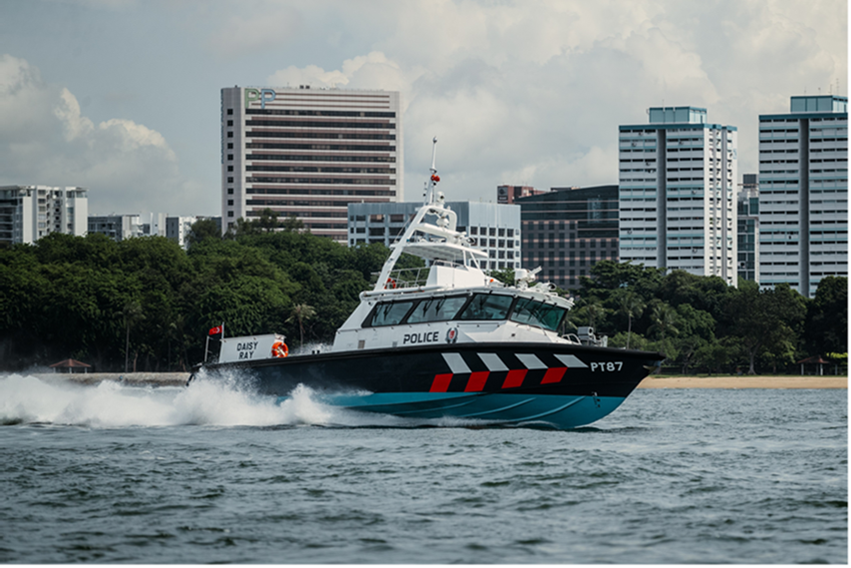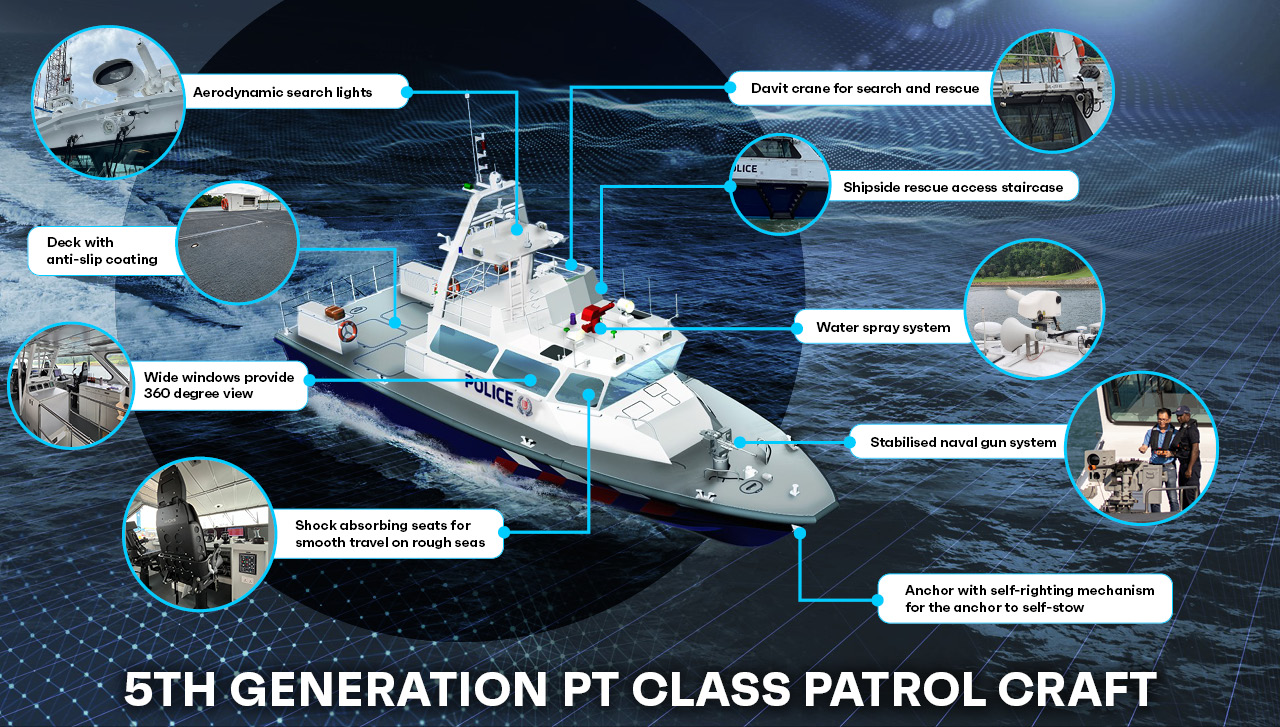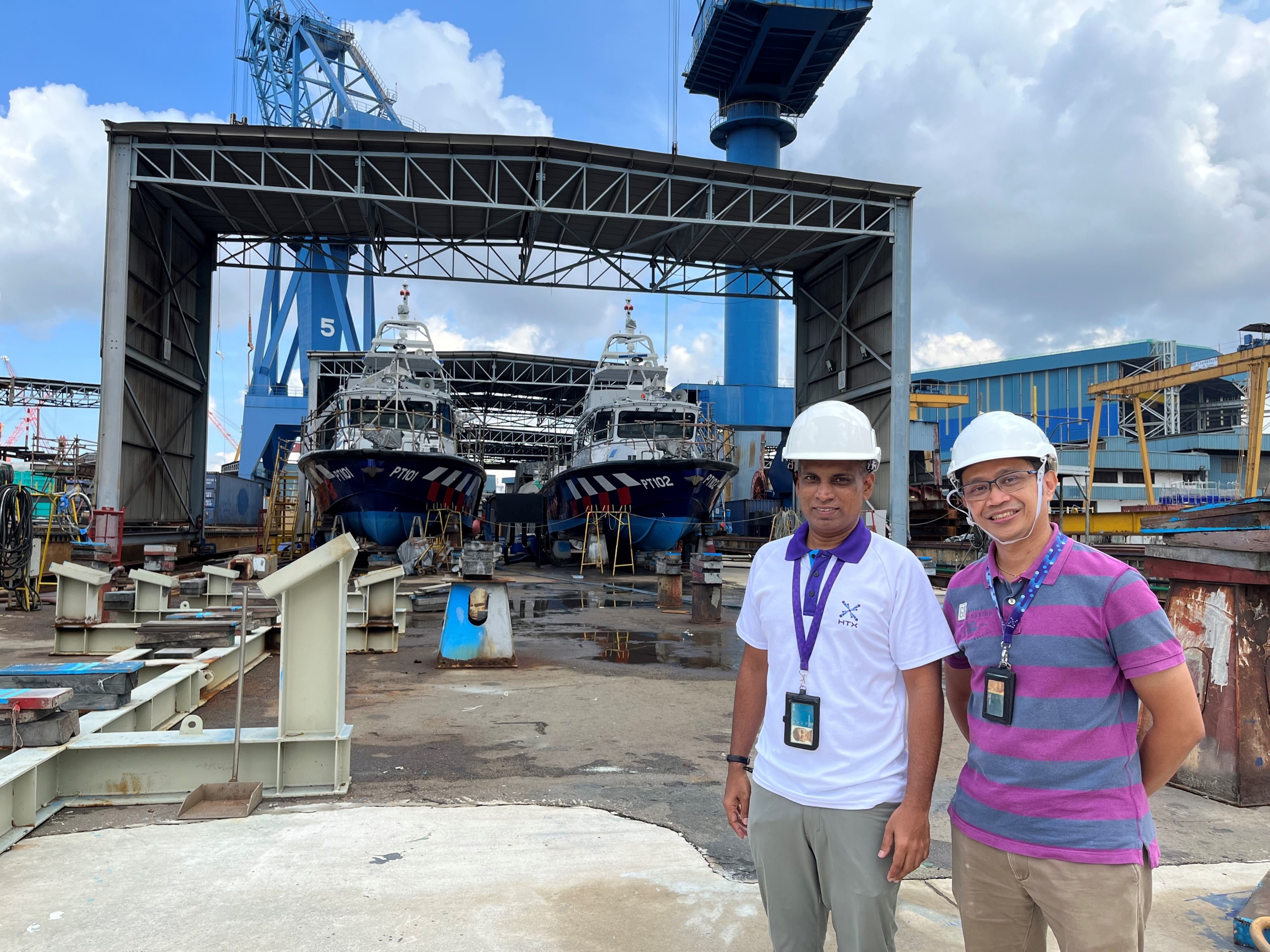
Singapore’s waters are among the busiest in the world, with an average of 140,000 vessels – from massive container ships to pleasure craft to small tugboats – passing through each year. Due to the high volume of shipping traffic and the porous nature of the country’s maritime environment, there is a pressing need to enhance operational capabilities in safeguarding the waters against intrusion and threats from the sea.
“We are vulnerable to terrorist attacks, smuggling of goods, as well as illegal immigrants and contrabands,” said Mr K Shanmugam, Minister for Home Affairs and Minister for Law, at the Police Coast Guard (PCG) commissioning ceremony of the next generation patrol craft on June 30, 2022.
“And the smugglers as well as illegal immigrants employ decoys and camouflage to avoid detection. They use faster boats, they try to breach our maritime defence, and evade arrest,” Minister K Shanmugam said. Last year, PCG arrested 24 illegal immigrants who attempted to enter by sea and prevented more than 5,600 vessel intrusions into Singapore’s waters – about 15 intrusions per day.
“Our small sea space gives us very little reaction time to respond to incoming threats before these threats reach our shores,” he said.
To deal with such maritime threats, PCG now has a new tool in its arsenal of vessels – the 5th Generation PT Class Patrol Craft, which is capable of high-speed operations and swift manoeuvrability. “PT” refers to the type of class the craft belongs to.
A force multiplier to secure our waters
Customised by engineers from HTX’s Platform Systems Sustainment Centre to meet PCG’s unique operating requirements, the 5th Generation PT Class Patrol Craft are among PCG’s larger vessels, which have improved features that enhance PCG’s maritime capabilities. These include an upgraded onboard surveillance system, with a greater detection range and a stabilised naval gun system, which allows the PCG to interdict hostile targets accurately during a pursuit.
These 5th Generation PT Class Patrol Craft have come a long way since the 1st generation of boats. For example, in terms of speed, the 23-metre-long 5th Generation PT Class Patrol Craft can travel in excess of 55 knots – or about 100 km/hr on land – more than double the speed of the 1st generation of boats.
They also have features not seen in other PCG craft such as foam fender to prevent damages to the deck, and an anti-slip paint coated deck, which is similar to helicopter landing pads.

Some features of the 5th Generation PT Class Patrol Craft. (Image of the craft: ST Engineering Marine. Photos: HTX/ Li Xin Hui)
Designing for maximum impact
For Steven Nathan, Head of Planning & Operations, Marine Systems, at HTX’s Platform Systems Sustainment Centre, the boat’s first sea trial was one of his most memorable moments while working on the project. “We travelled at the fastest speed that I have ever travelled on a boat of this size, but it felt so safe and comfortable. It was exhilarating, impressive, and I felt that all my hard work paid off,” he said.
Steven, who was with the PCG Technical Command (TechCom) for over 25 years before joining HTX when it was formed in December 2019, has a passion for engineering and boats. “I find meaning in building and managing high-speed patrol boats for PCG officers to perform their tasks effectively and safely to keep our Singapore waters safe and secure,” he said.
Ang Sin Ghee, Senior Principal Engineer, Marine Systems, at HTX’s Platform Systems Sustainment Centre, echoed the team’s focus on safety: “Officers should be confident to patrol safely.”
Both Sin Ghee and Steven have been deeply involved in the project from its initiation, putting together the technical specifications as well as overseeing the design, construction, testing, and delivery of the boats. The boats, built by ST Engineering Marine, are being progressively delivered this year. “The boats are built to be operationally capable to mitigate projected threats or trends for as long as possible,” Sin Ghee added.
The team also had to design the vessel to meet PCG’s specific needs. “PCG has unique requirements given the terrain, operating procedures, and threats to address. We had to explain to the shipyard, which is a commercial entity, why the unique features were needed,” Steven said.
Aside from the features, the aesthetics of the boat were also carefully considered as it had to uphold the image of the Singapore Police Force. “We don’t want the vessel to look like a tugboat,” he quipped.
Keeping boats shipshape from stem to stern

(From left to right) Steven Nathan, Head of Planning & Operations, Marine Systems and Ahalid Hasmuni, Deputy Director, Marine Systems from HTX’s Platform Systems Sustainment Centre. In the background is a pair of 5th Generation PT Class Patrol Craft receiving their finishing touches before delivery. (Photo: HTX/ Michelle Lim)
While the delivery of the boats is almost complete, the work of the Platform Systems Sustainment Centre team is far from over, as they now need to ensure good maintenance of the craft.
“Platform Systems' forward-deployed officers stationed within the Home Team Departments (HTDs) will ensure that these boats remain technically relevant to HTDs’ operations,” said Ahalid Hasmuni, Deputy Director, Marine Systems, who is forward-deployed to support PCG and SCDF marine operations. He also manages a fleet of smaller class vessels that operate in narrow and shallow congested waters around Singapore.
“Our presence at the fore would enable us to keep abreast of the HTDs’ operational requirements and stay attuned to any operational changes,” he said.